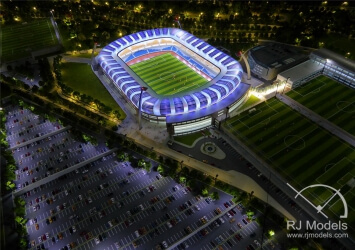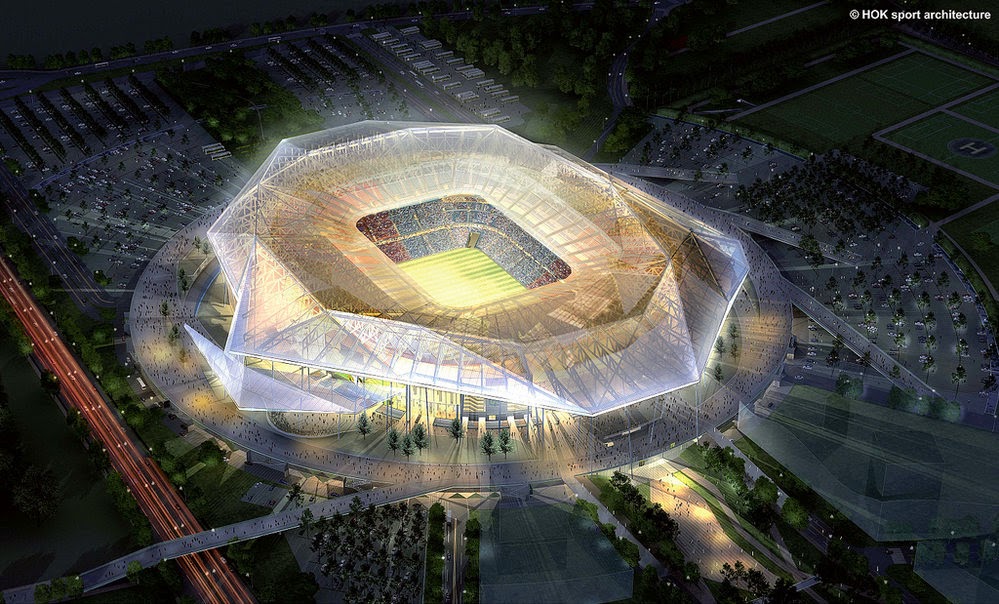
The architect Archibald Leitch brought his experience with the construction of industrial buildings to bear on the design of functional stadiums up and down the country. Upon its completion the stadium was the first joint purpose-built football stadium in the world. No football was played instead the 12,000 crowd watched a short track and field event followed by music and a fireworks display. The stadium was officially opened on 24 August 1892 by Lord Kinnaird and Frederick Wall of the Football Association. Everton officials were impressed with the builder's workmanship and agreed two further contracts: exterior hoardings were constructed at a cost of £150 and 12 turnstiles were installed at a cost of £7 each. A third covered stand accommodating 3,000 spectators was also requested.

Walton-based building firm Kelly brothers were instructed to erect two uncovered stands that could each accommodate 4,000 spectators. Goodison Park was the first purpose-built association football stadium in the world.

All of the 19th-century wooden parks were replaced, some after a few years, and none survive today. Many of these parks caught fire, and those that did not proved inadequate for a growing game. In the U.S., many professional baseball teams built large stadiums mainly out of wood, with the first such venue being the South End Grounds in Boston, opened in 1871 for the team then known as the Boston Beaneaters (now the Atlanta Braves). Other early stadiums from this period in the UK include the Stamford Bridge stadium (opened in 1877 for the London Athletic Club) and Anfield stadium (1884 as a venue for Everton F.C.).

"I laid down a cinder running path of a quarter-mile, laid down the present Lansdowne Tennis Club ground with my own theodolite, started a Lansdowne archery club, a Lansdowne cricket club, and last, but not least, the Lansdowne Rugby Football Club – colours red, black and yellow." Some 300 cartloads of soil from a trench beneath the railway were used to raise the ground, allowing Dunlop to use his engineering expertise to create a pitch envied around Ireland. Banned from locating sporting events at Trinity College, Dunlop built the stadium in 1872. One such early stadium was the Lansdowne Road Stadium, the brainchild of Henry Dunlop, who organised the first All Ireland Athletics Championships. With tremendous growth in the popularity of organised sport in the late Victorian era, especially association football in the United Kingdom and baseball in the United States, the first such structures were built. The first stadiums to be built in the modern era were basic facilities, designed for the single purpose of fitting as many spectators in as possible.


 0 kommentar(er)
0 kommentar(er)
